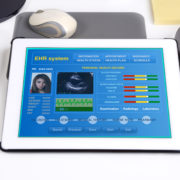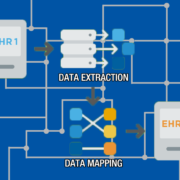How EHR can Improve Patient Outcomes in Orthopedics
EHRs have become a standard in today’s medical practice. But what if you could get more than simple patient information and notes from your EHR system? Some orthopedic offices have begun to use EHRs to develop creative solutions to patient problems, helping improve patient outcomes. A recent study found that 58 percent of the patients who were referred to a major medical center for back pain surgery would have better outcomes without surgery. What information is hiding in your EHRs that can be used to improve your patient’s outcomes? Here’s a quick glance to help get you started.
Recent estimates project American health care system waste at over $1 trillion, while still providing uneven results across practices, medical center systems and numerous other areas. At the same time, online marketers walk customers through a range of complex processes to open credit cards, buy shoes or look for the perfect gift for a loved one. What if your practice could have the same level of digital pathways going through your orthopedic EHRs?
Has your osteoporosis patient had her most recent bone scan? Is it time to remove the pins from that high school football player’s complex ankle fracture? What about the patient who is constantly having issues with her artificial joint? Though these seem like everyday problems, they can be better managed through digitization of your practice’s digital systems. But how do they work to improve your patient outcomes?
Part of digitization includes collecting a wide range of information, sometimes referred to as big data, which is then analyzed using a computer system’s analytics software. This data can be compared across a wide range of other information to help improve your patient outcomes. How? Here are a few examples.
Perhaps your osteoporosis patient has a particular genetic subset making her more susceptible to bone loss. Tagging that genetic subset in her file makes it easy to review her case when a new study is located suggesting that increasing vitamin D intake to a particular level can improve calcium uptake. Because the new study took place in Sweden, you wouldn’t have seen it otherwise.
As he’s going through physical therapy, your football player’s kinetic motion is tracked. Using this data and feeding through a computer model, you can determine whether there is still stress being placed on the pins, signaling that the bone has not completely healed yet. That helps you discover if the young man is following his instructions or pushing too hard to get back onto the field.
When your knee replacement patient calls in because her new knee has locked up or separated, what if you could quickly enter her information and determine whether it will continue to be an issue or what steps can be taken to prevent future problems? System connectivity to track recall issues or patient complaints from a particular product is the difference between fixing the problem and causing further issues down the road.
EHRs can provide you with a wide range of tools, but having the capability to leverage those tools and that data to better benefit your patients can seem like an impossible task.
At Exscribe, we’ve developed a number of comprehensive solutions to your orthopedic clinic’s issues, including outcomes and profitability. Discover how our solutions help you more easily manage patient demographics, appointment scheduling, coding and billing, practice accounting reports and office finance. Contact us today to request a demo of our digital orthopedic products, get more details or move your practice into a dynamic digital future.











